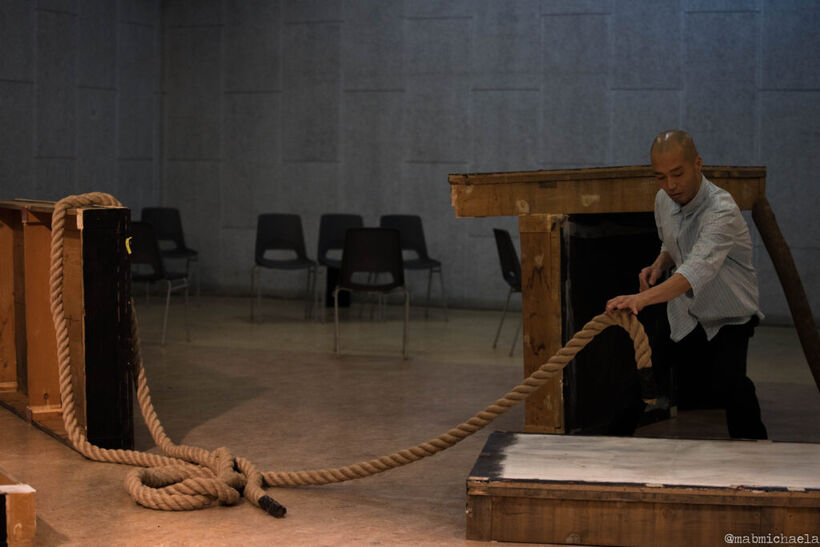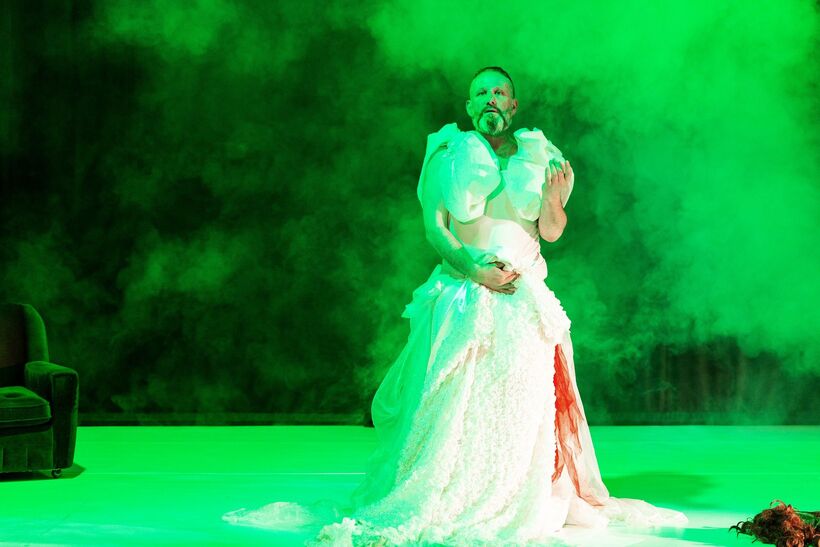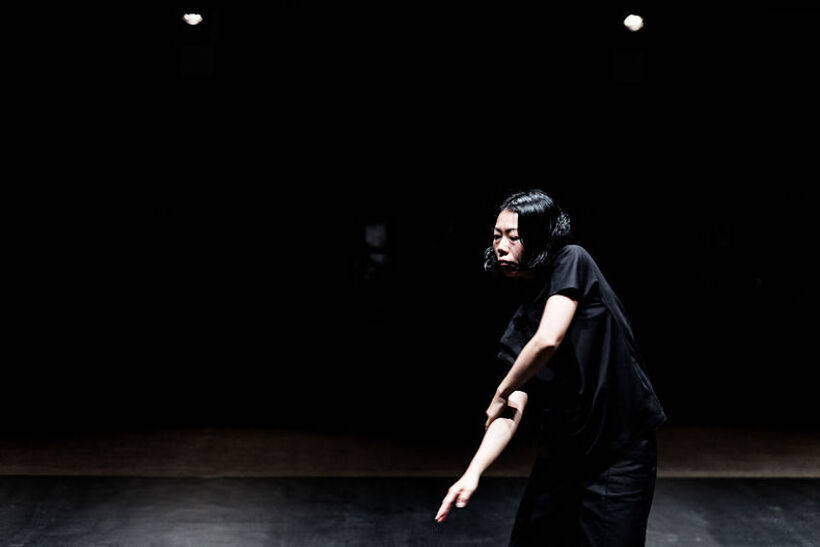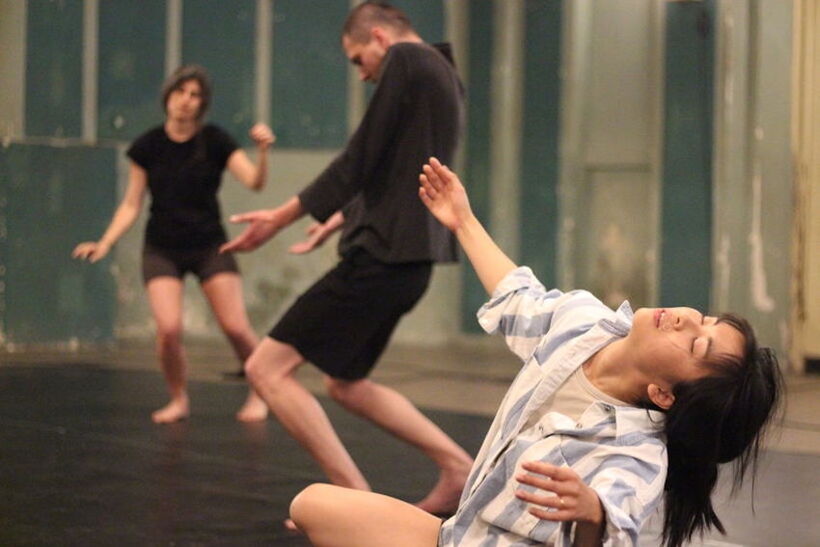Summer with Butoh at Alta and Venuše
At the beginning of the summer, Prague's Venuše ve Švehlovce and Studio ALTA took on an interesting challenge by inviting three butoh dance teachers to lead masterclasses and offering participants an extra scholarship for their participation. It is still not common in our country for artists to be motivated to learn by financial rewards. Moreover, the opportunity comes at the same time as a public fundraising campaign for facilities and toilets at Alta's new headquarters – that is how National Recovery Plan grants work, too. There was a great deal of interest in the classes and three productions found their audiences, each presenting a different face of the ever-popular butoh.
The dance form, now known as butoh in the West, originated in Japan as protest art in the underground in the 1960s, primarily due to the activities of Tatsumi Hijikata (1928-1986) and Kazuo Ono (1906-2010) and their co-creators and students. The artists revolted against the rapid economic and industrial boom, recalled the threats of war, and called for a return to nature. They were inspired by European inter-war dance modernism and post-war German dance theatre. They contrasted the unbreakable Japanese belief in spirituality of all kinds, influenced by the mixing of different religions on the islands, with the threats of rapid progress, loss of humanity and mutual tolerance. They turned their attention back to the body and physicality as a value of expression without the need for aesthetic or social correction (hence the frequent use of nudity or unnatural positions of the limbs or grimaces). The performances were often mixed with demonstration, proclamation, social criticism, and meditation. They were meant to shock and quietly bring out the dark side of the soul – this is why Hijikata began to refer to his dance as "dark" in Japanese ankoku butoh.
In the 1980s and 1990s, the genre found a new life due to the enormous popularity it gained touring outside Japan, mainly thanks to the groups Dai Rakudakan and Sankai Juku; Kazuo Ono, who danced until he was an impressive age of 103, also toured with his solos. The West has simplified the original term to just the word butoh, which simply means dance in Japanese, but the term has taken hold worldwide for this particular genre (except in Japan, where the term butoh continues to refer to different dances depending on context). Today in Japan, it tends to survive in small circles around direct disciples of one of the founders, but in the West, it exists in many forms that have been given to it by all the enthusiastic performers. What they all have in common is a strong emphasis on the authentic expression of the body and immersion in a different spiritual dimension of performer and spectator. That is why, since the 1990s, it has influenced and inspired artists in the field of physical theatre to a great extent.
The stories and specific concepts of the three invited lecturers perfectly illustrate this diverse range of similar principles. I was interested in the way butoh came to them and how they work with its legacy today.
"I'm still on edge..."
Michiyasu Furutani, born in Osaka, Japan, is a choreographer, dancer and performer whose work grows out of butoh techniques. In the process of constant research, he has developed his movement repertoire to include improvisation and various modern and classical dance techniques combining unpredictability, necessity and intuition. Furutani's work is often created in collaboration across disciplines, including film, architecture, visual art, contemporary music, and he presents his work worldwide. He believes that improvisation is a key factor in exploring new spaces for sharing knowledge with each other.
"My first contact with butoh was through Masaru Kaito and Yuri Sakurai, former members of Dai Rakudakan. Then I worked with the groups Yan-shu, Daizu-ko and Sal Vanilla, which were also formed after Dai Rakudakan. I also worked in the musical jazz ensemble Shibusa Shirazu Orchestra, which means 'never be cool', so I was always in a theatre-non-theatre and music-non-music environment, as is appropriate for a butoh context," he explained his relationship with butoh in an interview.
In his performance Fell, in turn, he explored the theme of gravity and the interaction of the human body and scenic objects together with Lucia Bricco, an Italian performer based in Greece. He was able to masterfully manipulate the audience's concentration as he repeatedly played with the moments before the inevitable falls.
"We are always on the edge, every moment can turn into a release or, on the contrary, a disaster, we never know in advance. For me, the darkness of the dance refers precisely to that acceptance of the existence of two sides to every moment. There's a certain spirit of punk, of disorder, of destruction in butoh, which for me is waiting for something to slip into our lives with a moment of deconstruction," he says when I ask how his work refers to the genre’s original label.
"I am developing dramatic expansion in a limited body..."
Daniel Somerville, independent artist, performer and dramaturge, academic researcher and lecturer at the University of Worcester, has linked butoh to themes of queer identity and opera practice. His teachers, Marie-Gabrielle Rotie and Ko Muroboshi, derive their know-how chained to Kazuo Ono, a lyrical rather than expressive movement. Somerville also drew inspiration from him on the subject of the non-binary concept of gender.
"For me, butoh suppresses the binary; it's more full of paradoxes. It originated in Japan, but it was only through inspiration from Europe and America that it subsequently became most successful. It seeks beauty in the grotesque, enlightenment in horror. It is a recognised form that frames 'nothing' into a formless 'anything'. It works with dashes, making reference to Zen philosophy," Somerville explains his view.
We probably would not have included his production of Admiring La Stupenda in the butoh genre-box without knowing the context. It's a one-man show in which he combines acting and dancing with lectures on singing, mixed with poetry. His movement is primarily based on mime and mannerisms of opera singers to the music of various arias. He guides us through the story of a gay man remembering an admired soprano whose love for a diva connects with his love for his ill mother.
"Opera singers are limited in the way they can move and look while singing, yet they convey with all their might the character of the words they are saying. When I watched their faces without sound and in slow motion on video, I saw a great connection to the butoh in the expression. What I am developing is a dramatic expansion in a limited body but multiplied time. It may be challenging, slow, meditative or uncomfortable for some, but making you feel something is the point of the performance," explains Somerville on how he works. The subject of the production references Kazuo Ono's famous work Admiring La Argentina, but beyond the external similarities, I don't find the essence of butoh in his work.
"The forces that move me"
Yuka Negoro was the last of the trio of lecturers to be presented in Prague this year. A dancer from the Biwakei group, Secuko Yamada, a famous pupil of Akira Kasai, is imparting the principles of butoh in London today as part of improvisation and contemporary dance classes. She says she doesn't consider her dance to be butoh, but she takes away a lot of its principles internally through her time in Biwakei. Thanks to Jamada, improvisation has become central to her expression. She then attended the studio of Marie-Gabrielle Rotie in England, who studied butoh with many dancers. With her, she learned the importance of stillness.
"One of the key elements I learned from all the teachers was 'being moved,' rather than moving myself. The forces that move me can be imagery or vibrational forces within and without the body. Cultivating perception and sensitivity to the forces has been at the core of my dance practice ever since," she explains. "I started studying somatics and I am increasingly close to Hijikata's philosophy of the body, which I probably unconsciously picked up from my teachers."
She divided the performance I and It into two parts, the first of which was a short, simple improvisational sketch on the subject of passive upper limbs, and had the audience sit right in the middle of the stage, within reach of her body. In the second part of the evening, she worked with partial physical fixation or restriction, but prepared a more spatially and dynamically structured dance performance. The movement composition was complemented with musical and sound improvisation by percussionist Elia Moretti. The interaction between the two performers was rather haphazard, which made it all the more impressive.
"The audience is always part of the performance. They shape it. The collective energy in the room decides every moment. You can never tell in advance how the evening will turn out. They determine their own experience and interpret the message of my dance," she admits during a post-performance discussion, vibing with the other two guests.
Each of the three artists presented a different form of how the technique, method, aesthetic or philosophy of Japanese butoh can be used to inspire and enrich their movement creations. If the organizers could bring three different artists working in Europe each year, it would be interesting to compare the development in each country, as I have long observed that the traces and the use of butoh in e.g. France, Germany, Finland, Greece or Poland are very different. However, those who have attended all three workshops this year have certainly absorbed what is common and vital to the essence of butoh – absolute concentration, immersion, surrender and awareness of every micro-detail of one’s body.
Written from a series of performances, workshops, discussions and interviews with artists in May and June 2023, Venuše ve Švehlovce, Studio Alta, Prague.
Fell, In Turn
Choreography and performance: Michiyasu Furutani, Lucia Bricco
26 May 2023, Studio Alta
Admiring La Stupenda
Choreography and performance: Daniel Somerville
3 June 2023, Venuše ve Švehlovce
I and It
Choreography and performance: Yuka Negoro, Elia Moretti
23 June 2023, Venuše ve Švehlovce







